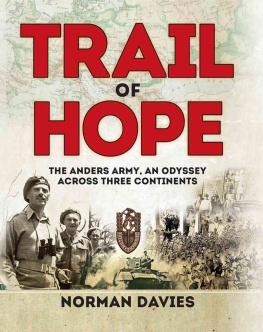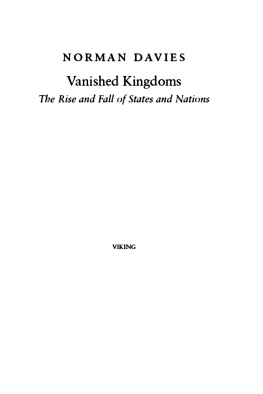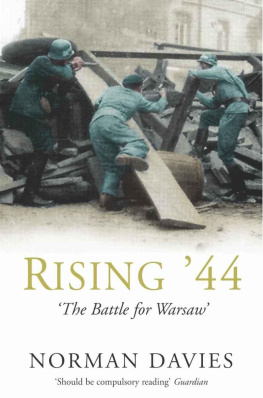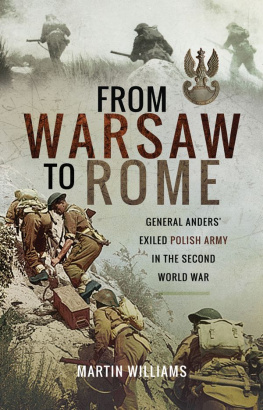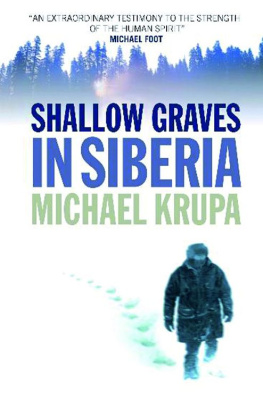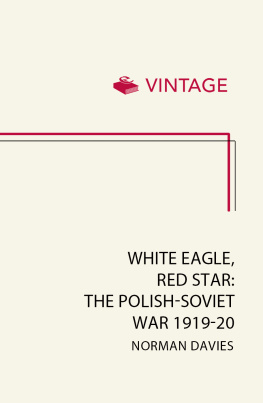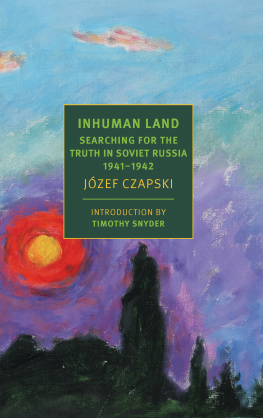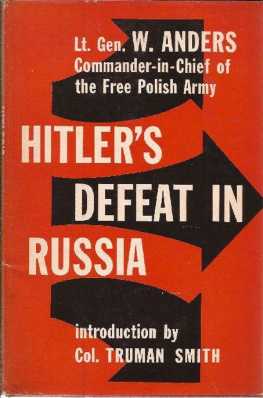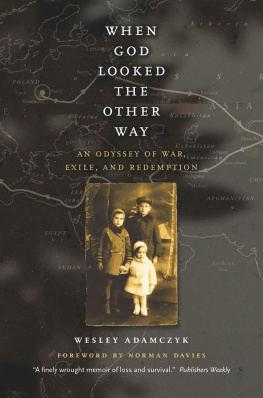
This electronic edition published in Great Britain in 2016 by Bloomsbury Publishing Plc
Copyright Norman Davies (text) 2015
Copyright Rosikon Press 2015
Photographs: Janusz Rosiko
Layout: Maciej Marchewicz
Collaboration: Jan Kasprzycki-Rosiko
Copyediting: Mary Murphy, Iwona Zych
All rights reserved.
No part of this publication may be reproduced, stored in a retrieval system, or transmitted in any form or by any means, electronic, electrical, chemical, mechanical, optical, photocopying, recording or otherwise, without the prior written permission of the copyright owner. Enquiries should be addressed to Rosikon Press.
Every attempt has been made by the Publisher to secure the appropriate permissions for material reproduced in this book. If there has been any oversight we will be happy to rectify the situation and written submission should be made to the Publisher.
A CIP catalogue record for this book is available from the British Library
ISBN: 978-1-4728-1603-0
ePub ISBN:-978-1-4728-1605-4
PDF ISBN:-978-1-4728-1604-7
Osprey Publishing, part of Bloomsbury Publishing Plc
PO Box 883, Oxford, OX1 9PL, UK
PO Box 3985, New York, NY 10185-3985, USA
E-mail: info@ospreypublishing.com
www.ospreypublishing.com
INTRODUCTION
I HAVE LONG WANTED TO PRODUCE A BOOK ON GENERAL ANDERS AND HIS ARMY, BUT FOR MANY YEARS WAS UNABLE EITHER TO FIT IT INTO MY SCHEDULE OR TO DECIDE ON ITS FORM AND CONTENT.
A book proposal for an academic study of the subject, which would have been similar to my work on the Warsaw Rising Rising 44 failed quite recently to find favour with my British publishers, and I was forced to think again. But I did not lose my conviction that a comprehensive survey of the Anders story was long overdue.
The decision to give preference to a popular, richly illustrated album was inspired by three factors. First, I was greatly pleased by my earlier cooperation with Rosikon Press over To and From, an album, which presented modern Polish history through the medium of philately and postal history. Secondly, I became aware that the number of eyewitness memoirs was multiplying fast, providing valuable insights into every stage of the saga. And thirdly, having noticed the abundance of unpublished photographic materials, I realised that a visual approach could be more effective than the traditional academic route. I found the title Trail of Hope or Szlak nadziei long before any detailed plans had been laid.
I also felt strongly that my work should strike a different tone from that of its predecessors. Most of the existing literature concentrates on two episodes either on the martyrology of Poles deported to the USSR in 19401941, or on the culminating Battle of Monte Cassino in May 1944. These remain vital elements within the whole. Yet I was determined to show more. I wished to convey something of the geographical grandeur of the Trail, which led from Russia and Central Asia through half a dozen Middle Eastern countries to Italy, England, and eventually to more distant continents. I wished to explain the wartime context of the adventures of the Andersowcy (the Anders Army), whose destiny was shaped by successive shifts in the strategic framework: by Operation Barbarossa in 1941; by German defeats at Stalingrad, Kursk, and El Alamein in 1942; by the Allied offensive in Italy in 19431944; and by the Yalta Agreement of 1945. Above all, I wished to demonstrate not only the rich diversity of people, who answered to Anders command, but also the extraordinary variety of their experiences and emotions, from death and despair, to fear and longing, ordeals and self-sacrifice, and, at the end, to a mixture of relief, resignation, bitterness, and hope.
The main text was written at pace, without any laborious research, drawing on knowledge that had accummulated in my head over the decades. My task was assisted by the fact that in the previous year I had presented a course of twenty lectures on the subject at the Oriental Institute of the Jagiellonian University in Krakw. In the second stage, flesh was added to the bones by inserting scores of substantial extracts from memoirs and eyewitness reports, thereby counterbalancing the historians views with the voices of people who had completed the Trail in person. Each of the 20 chapters was then embellished by hundreds of pictures, many collected by an Internet appeal. The sheer weight of the pictorial material ensures that the historians contribution does not dominate.

AUTHOR NORMAN DAVIES AND PHOTOGRAPHER JANUSZ ROSIKO in Jerusalem (January 2014). Together they visited many (though not all) of the sites along the Trail of Hope.
AS PART OF MY PREPARATION, I thought it essential, if not to tramp the trail from start to finish, at least to visit a selection of the key sites in person. With this purpose in mind, I succeeded in travelling in the company of Mr Janusz Rosiko and his camera to Russia, to Iran, to Israel, to Italy, and to several evocative places in England. Our expeditions enabled us to add an extra dimension to the pictorial stock, where the old black-and-white images of yesteryear can be compared and contrasted to the vivid colour of todays digital wonders. They equally helped to sensitise us to the times and places that figure in the album. It is one thing to write factual sentences such as General Anders was held prisoner in Moscow by Stalins NKVD; it is something else to stand in front of the newly painted Lubyanka, to see that Felix Dzierzhynski is still honoured there, and to realise that todays Russia is far from changing all its spots. In Iran, we not only travelled the road from the port of Pahlevi (now Bandar-e Anzali) to Tehran and Isfahan; we saw with our own eyes the glorious snow-capped mountains and fabulous Islamic art that sweetened the exiles pain. In Israel, while seeking out some of the survivors, the journey gave us ample food for thought to grasp that the Jewish state, about which some of Anders soldiers could only dream, is now a reality. And in Italy, we not only attended the annual commemoration of Monte Cassino; we walked round the flower-filled cloisters of St Benedicts rebuilt foundation, and recalled the spine-chilling moment when a Polish trumpeter had scaled the heights and with a marvellous sense of appropriateness had sounded the hejna mariacki (St. Marys Trumpet Call).
We have agreed on the popular term, the Anders Army, for the simple reason that all the alternatives would be infernally complicated. The force, over which Anders was given command in August 1941, was officially called The Polish Armed Forces in the USSR. When the Army was evacuated to Persia it became Polskie Siy Zbrojne na Bliskim Wschodzie. One also meets the simple PSZ na Wschodzie, in the East. In March 1943, however, the Army was divided into two: the Polish II Corps, which was to be attached to the British VIII Army, and the Polish III Corps, which was to remain in the Middle East.
General Anders and his army now belong to history. The pain and strivings of his followers have come to an end. For which reason, it is all the more important that the new generation should learn what happened, and pay tribute to a triumph of the human spirit. If the Poles of today knew their history better, perhaps they would be less inclined to decry their nations achievements in the last 25 years.
NORMAN DAVIES
OXFORD, JUNE 2015

